Preventive examinations for cats help to identify health problems at an early stage and enable our velvet paws to live a long and, if possible, symptom-free cat life. Find out how much a cat health check costs and how it works.
Table of Contents
💡The most important thing summarized: health checks for cats
Health check : For cats, the routine examination in the animal medic practice consists of an intensive discussion with you as the owner about the cat’s health and a physical examination of the animal.
Process : During your cat’s health check, your animal doctor will ask you about, among other things, eating and drinking behavior, urination and defecation, urge to exercise and behavioral problems, and will examine your pet’s teeth, fur and skin as well as your pet’s heartbeat and temperature.
Frequency : For young cats and kittens, a health check once a year is sufficient. For cats aged seven and over, semi-annual routine examinations can be useful. In addition, a blood test should always be carried out on older animals.
Costs : According to the Fee Schedule for Veterinarians (GOT), the cost of a health check for your cat ranges between approximately $24 and $71 – depending on the fee rate. If further examinations are to be carried out, the costs will increase. Why is a regular health check useful for cats? Regular health checks for cats make sense because it can often be seen early on whether the cat is sick. In the best case scenario, treatment of the animal can begin before the cat’s first symptoms appear.
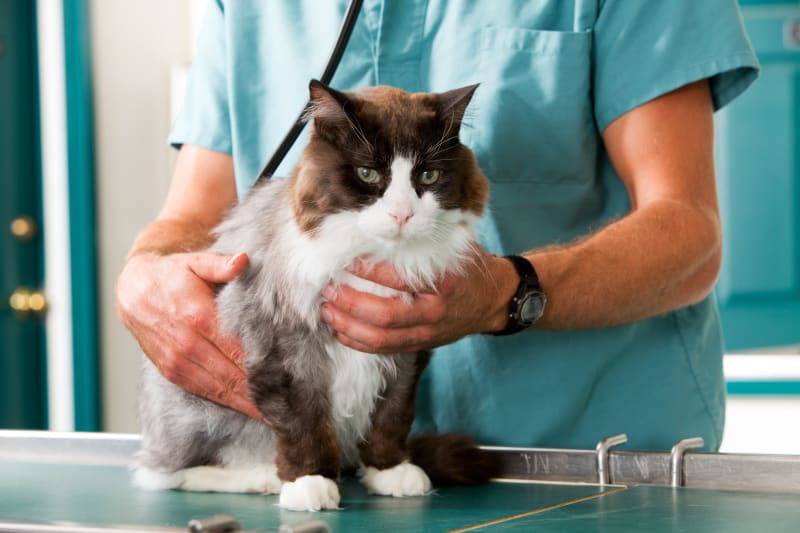
Cats are masters at hiding their suffering.
The reason for this lies in the genes. Cats used to live in the wild and hunt their prey in forests, meadows and thickets. If they became sick or old, they were suddenly no longer hunters but became prey themselves. In order not to fall prey to foxes or wolves, the animals were not allowed to show any weakness. This type of self-protection is still deeply anchored in our domestic cats today. Cat owners often cannot tell whether their beloved pet is in pain or sick. Clarity often only comes from a careful examination of the cat by the animal doctor. Many diseases, such as tumors or kidney diseases, can only be diagnosed with professional equipment.
For example, it is hardly possible to detect kidney disease in cats from the outside . At the same time, it is one of the most common cat diseases – especially as your four-legged friend gets older. In order to diagnose kidney disease without any doubt, the cat’s blood must be taken. Since cats’ kidneys cannot regenerate if they have serious health problems, it is even more important to take blood from the cat during a health check. In addition to kidney diseases, health problems such as high blood pressure, parasite infestation, hyperthyroidism or diabetes often go undetected without regular cat health checks.
Preventive examinations help to detect illnesses at an early stage and initiate appropriate treatment steps
How often does a cat need to go to the vet? Basically, you should take your cat to the vet once a year for a health check. Of course, this only applies to general preventive examinations – if you have acute symptoms of illness, injuries or suspected parasites, such as worms in cats, you should consult your animal doctor immediately. However, if the cat is otherwise well, an annual check-up appointment is usually sufficient for younger animals. This applies to outdoor cats as well as indoor cats. Older animals and senior cats should ideally have a health check with the animal doctor twice a year in order to detect age-related diseases at an early stage.
💡Good to know : Even though six-monthly checkups for your cat may sound like a lot, you will ultimately save money on your cat’s health check. Because: If an illness is detected early and treated in the early stages, it costs much less than if your cat later becomes chronically ill and has to constantly go to the vet’s practice or has to be given medication on a long-term basis. How does a health check of my cat work at the animal medic practice? How your cat’s health check works in the animal medic practice depends on the practice and on the age of your pet.
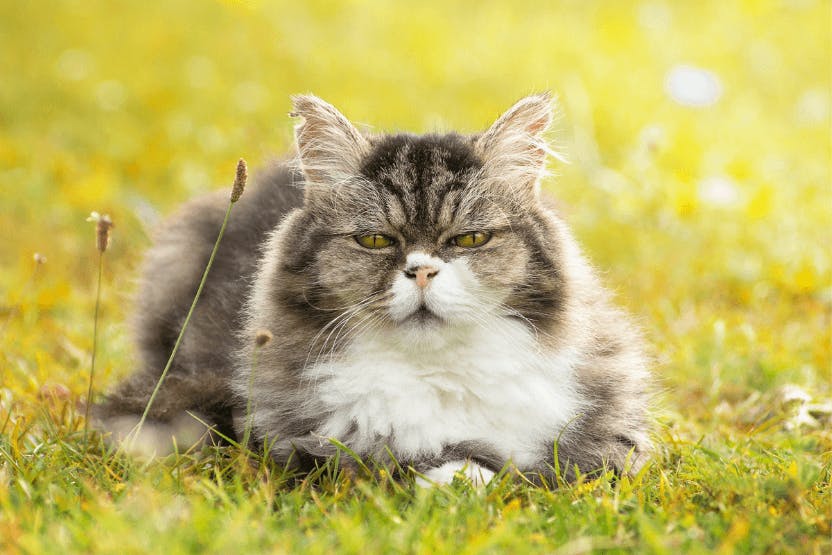
For older cats, the annual check-up should be more extensive than for younger animals
Regardless of age, the following points should always be clarified during your cat’s health check:
- Abnormalities in drinking and eating behavior (does the cat eat normally or does the cat not eat, has it gained or lost weight recently)
- Composition and release of feces and urine (is toileting normal or does the cat show any abnormalities)
- Changes in behavior and temperament (the cat moves less, withdraws or suddenly appears aggressive)
- Condition of skin and coat Check teeth, gums and periodontium Palpation of the abdomen and lymph nodes Check your heart, pulse and body temperature Listening to the lungs Checking immunization status
- Blood test : in younger animals, unless there is a specific suspicion of illness. From the age of six at the latest, blood tests should be part of your cat’s annual health check – because often only a complete blood count can provide information about hidden diseases and clarify whether the cat is suffering from kidney or thyroid disease, for example. X-ray of the cat : can be useful as a preventive examination for your cat from the age of six to seven. Using the x-ray images, the animal doctor can see whether there are any changes in the organs that could indicate an organ disease or a tumor. Ultrasound in cats (cardiac ultrasound): can, among other things, provide information about whether the heart continues to function smoothly or whether there are signs of heart disease. In the abdominal cavity, the procedure can not only reveal pregnancy, but can also prolong life, especially in senior cats, as it allows tissue changes such as tumors in the abdominal area to be detected at an early stage.

Cost examples: How much does an examination at the vet for cats cost?
The cost of a health check for your cat depends on which examinations the animal doctor carries out on your pet. Basically, all animal medic costs for cats are based on the fee schedule for veterinarians (GOT) . You can use this fee schedule to find out what costs you might incur for various examinations. However, it does not specify any specific fees, just a price range. These are the so-called GOT fee rates.Depending on the effort and extent of the treatment, the costs for a preventive examination for your cat during a visit to the vet vary. For a normal cat health check, most veterinarians charge 1 or 2 times the fee. If the treatment is more complicated or the service requires more time, 3 times the GOT rate can be applied. In the case of emergencies on the weekend or at night, a 4-fold fee is possible.
How much does a cat health check cost?
According to the fee schedule for veterinarians, the following veterinary costs apply for a preventive examination of cats in the veterinary practice. To provide an overview, we have listed some cost examples of the fee rates for the treatments:
- Costs for a cat health check (single rate ): $23.62
- Cost of a cat health check (set of 2 ): $47.24
- Cost of a cat health check (set of 3): $70.86
💡Did you know? With the revised fee schedule for veterinarians, which came into force in November 2022, veterinary costs have increased significantly. The costs for a health check for cats under the old fee schedule at 1x the GOT rate were only $8.89, while cat owners today have to pay at least $23.62 for their cat’s preventive examination. Since the treatment costs in the veterinary practice can quickly add up, it makes sense to take out health insurance for dogs and cats that protects you against high veterinary costs.
Does cat health insurance cover the costs of health checks for cats?
Depending on which insurer you have taken out cat health insurance for your cat with, this will cover the costs of your cat’s annual health check. However, you should note that costs are generally not covered by pure surgical insurance – because these cover the veterinary costs for operations, but not those for preventive examinations for your four-legged friend.It’s good if you don’t have to worry about it at all – because cat surgery insurance is already automatically included in petolo’s cat health insurance. And it gets even better – because, unlike other insurers, we not only cover necessary veterinary treatments, but also support cat owners with preventive car.
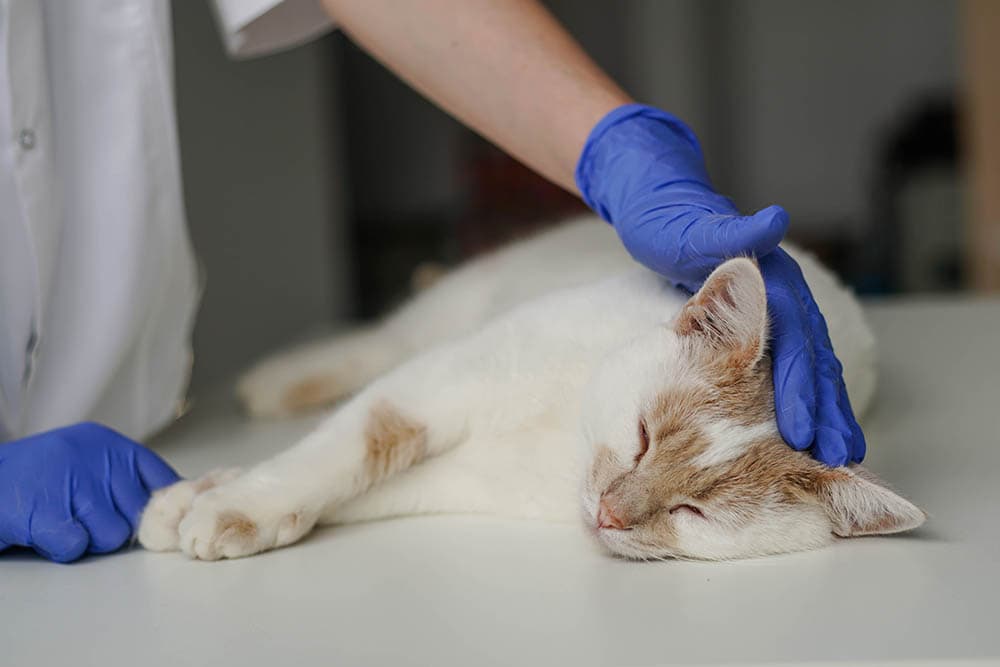
The cost of your cat’s regular health checks is covered by our annual health budget.
Depending on the tariff you choose and the benefit limits in the first two years of insurance, vets will reimburse the costs for your cat’s routine examination up to $120 per year.As part of the petolo health budget, vets do not only support you with the costs of your cat’s annual health check, but also with vaccinations, worming treatments and parasite protection. Dental health such as tartar removal for cats , alternative medicine and castration of your cat are also covered in the health budget for up to $120 per year. In addition to the annual health budget, cat health insurance offers other advantages such as cost coverage of up to 4 times the GOT rate, free choice of veterinarian when visiting the vet, SOS budget, immediate protection without waiting time and tariffs with up to 100% reimbursement. Simply choose the one that best suits you and your cat from the three tariffs of our cat health insurance.
Vet Checkups According to the current state of science
A cat is already a senior at the age of seven . Then she – just like us – has to go to the doctor more often. He can then examine whether your cat shows signs of age-typical diseases. Prevention is becoming increasingly important here. Then it’s best to go to the vet twice a year and have at least one blood test done once. As cats get older, the likelihood that your cat will become seriously ill increases. As they get older, illnesses such as diabetes, kidney disease or hyperthyroidism occur.
Five signs when your cat urgently needs to go to the vet
Of course, there are also symptoms where you should go straight to the vet to rule out a more serious illness for your cat:
- Your cat meows more often , even if all needs (food, affection, entertainment, etc.) have been addressed.
- Your cat has a runny nose , sneezes or coughs frequently, and has crusty eyes.
- Your cat has n’t eaten in more than a day.
- Your – actually housetrained – cat becomes unclean repeatedly.
- Your cat is losing fur .
Annual checkups at the vet
Different rules apply for senior cats or kittens. “If you have small kittens, you should go to the vet in the first one or two weeks,” says Christina. “Just to check the general status of the kittens.” Five to six visits to the vet should be normal in the first year of life.Because: Vaccinations must be administered during this time. “The basic immunization is carried out in the first year,” explains the veterinary assistant. You should also have your cat chipped straight away . You should also talk to your veterinarian about possible castration in your cat’s first year of life.
Preventive Examination
As humans, we go to regular preventive care, such as going to the dentist, or at least we should. This is nothing new. But what does it actually look like for our cats? Should cats have regular checkups? Small spoiler: Of course!You can find out in detail in this article how often your cat needs to go to the vet, what preventive examinations are available, when they make sense and what costs you will incur as a result.
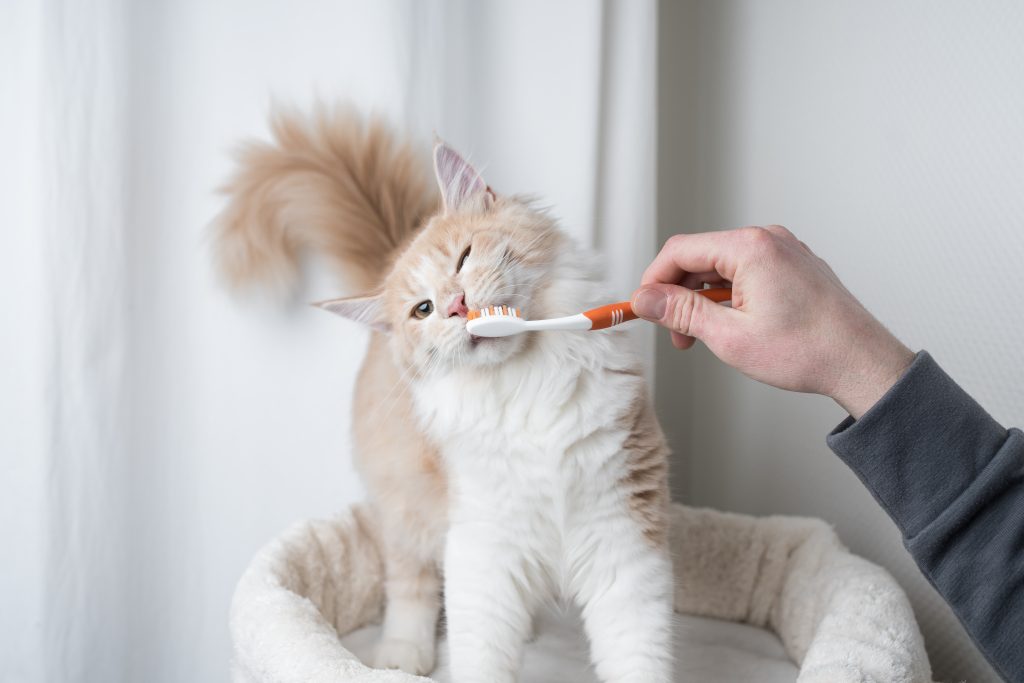
Animal Medic Examinations for your cat
In addition, there are animal medic examinations and preventive measures. This includes:
- Vaccinations checking external condition (general condition of eyes, nose, ears, claws, fur and figure)
- Palpating or listening to internal organs (e.g. heart, lungs, abdomen, liver and kidneys)
- Examination of bones and joints X-ray (e.g. dental X-ray)
- Ultrasound (e.g. cardiac ultrasound)
- Blood test to check for infections, inflammation levels or organ dysfunction Urine examination (e.g. in older cats with suspected kidney problems)
- Measuring blood pressure
- Check for parasites (e.g. with analysis of a fecal sample if worms are suspected)
Immunizations for cats are important point in preventive care
One of the most important aspects of preventive care for cats is regular immunizations. The immunizations that every cat should get include:
Cat flu: Feline Calicivirus (FCV) & Feline Herpesvirus (FHV)
Cat disease: Feline Panleukopenia virus (FPV)
In addition, immunizations against rabies or leukosis/feline leukemia (FeLV) may be necessary depending on the situation, type of husbandry and age.
Rabies immunization
A rabies immunization is only necessary if you want to leave the country with your cat. In US there is no longer any rabies, except in bats. The risk of infection is therefore very low. However, your animal doctor may recommend that you vaccinate your cat against rabies even if you are not traveling abroad. For example, if you want her to enjoy freedom or if you want to put her in a boarding kennel when you go on vacation. Especially when staying in animal boarding houses, in most cases it is a requirement to have your cat looked after there for the duration of your holiday. Under certain circumstances it could happen that rabies breaks out again in US. In this case, it is legally stipulated that unvaccinated cats must be euthanized if they are suspected of being infected. This risk can be easily prevented with a small prick.
FELV immunization
The situation is similar with the FeLV immunization. It is also recommended if your cat is allowed to go outside or if you want to keep it in a boarding kennel. In these cases, she potentially has contact with other cats whose FeLV status is unknown. However, with the FeLV immunization, young cats in particular should be vaccinated, as the risk of suffering from severe leukosis is higher, especially at a young age, and can be avoided through immunization. In cats over the age of 7, however, the risk of a serious infection is very low. From this point onwards, a immunization is actually no longer necessary under normal circumstances.
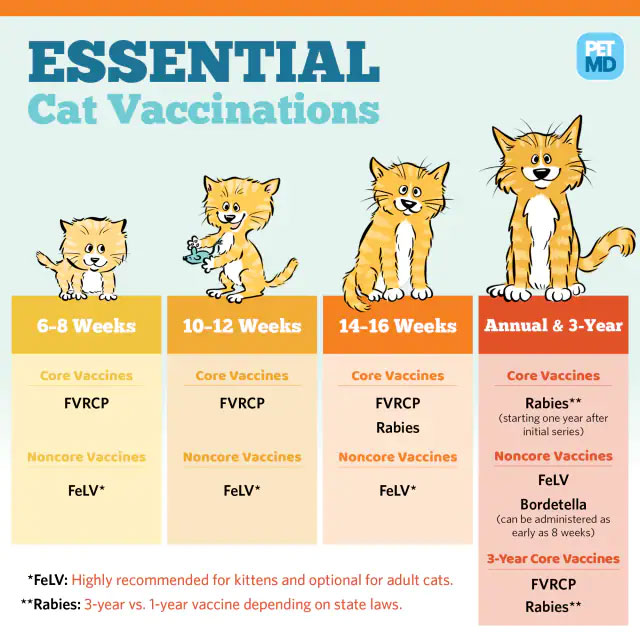
Difference between indoor and outdoor cats
The simple reason why outdoor cats need more immunizations than indoor cats is that they will almost certainly come into contact with other unknown cats or wild animals. The likelihood of this for indoor cats is relatively low. Although caution is advised here too! Indoor cats can also become infected with certain diseases, bacteria, etc., even if they are not allowed to go outside. We often bring the pathogens into our own homes. For example, through our hands, shoes or clothing. That’s why immunizations against cat flu and cat disease are mandatory, even for indoor cats.
The frequency of immunizations for adult cats
How often the immunizations need to be refreshed depends on the injection in question. The Standing immunization Commission for animal medic Medicine (StIKo animal surgeon) recommends the following intervals for a refresher for cats in US:
Cat flu (vaccine abbreviation RC): up to 3 years (depending on the injection)
Cat disease (vaccine abbreviation P): 3 years (or more with a positive antibody test)
Rabies (vaccine abbreviation T): according to the manufacturer
Leukosis (vaccine abbreviation FeLV): depending on the age of the person cat
It is best to get advice from your animal doctor about the necessity and intervals of rabies and leukosis immunization. However, this recommendation clearly shows that some animal doctors vaccinate too frequently. It is therefore important to inform yourself, not to just blindly get annual immunizations that are not actually necessary and, above all, to communicate openly with the animal surgeon about this topic.
The basic immunization of kittens
Young cats are a small exception when it comes to immunization. They should be given basic immunization in good time so that they are protected against diseases that can sometimes be life-threatening. Cats are particularly susceptible to illnesses at the beginning of their lives because their immune systems need to be built up first. This usually happens through breast milk in the first few weeks of life. The mother’s antibodies are absorbed through this and provide sufficient protection for the little ones.
However, since kittens do not drink from their mother for the rest of their lives, but switch to solid food within a few weeks and become more and more susceptible to illnesses due to the decreasing protection from their mother’s milk, additional support for the immune system is required.This support is guaranteed with basic immunization. It consists of a total of four immunization:
of age 1. immunization at 8 weeks
of age 2. immunization at 12 weeks
of age 3. immunization at 16 weeks
of age 4. immunization at 15 months of age
Please be sure to check your cat’s immunization status before taking them into your home. Any reputable breeder or animal welfare association should be able to give you detailed information about this and show you the immunization certificate.If your cat is not (fully) basic immunized when you get it, have it done as soon as possible. It is best to discuss with your animal doctor directly when exactly the best time is and which immunizations are still necessary at your cat’s age. This can always vary slightly.
General animal medic check-ups
In addition to immunizations, general examinations should definitely not be neglected. First, the animal surgeon will talk to you and ask about any abnormalities or changes. This also includes whether something has changed in your eating and drinking behavior or whether you have recently noticed something in your urine and feces. Once these points have been clarified, the animal doctor will check the external condition of your cat. In other words, what is the general condition of your cat’s eyes, nose, ears, claws, fur and figure? How does she move?
This also includes a general check-up with weighing and temperature measurements, among other things. This is often carried out by a animal medic assistant (TFA) before the actual examination.In addition, these two things should normally be done at every visit to a good animal doctor and not just at explicit check-up appointments.
Further animal medic check-ups
If your cat’s blood is taken and examined, this is used, for example, to determine possible infections and inflammation levels or provides information about the condition of the internal organs. For example, metabolic diseases can be detected early.However, young and healthy cats do not necessarily need to have their blood taken and tested every year. However, if you want to be sure, if you are going to have anesthesia anyway or if you suspect that something might be wrong, then a blood test can definitely make sense.
Most ultrasound examinations are also rather unusual for young cats. But it can’t hurt to consider such an examination.The heart disease HCM (hypertrophic cardiomyopathy) in particular often remains initially undetected and can then become very dangerous or, in the worst case, even fatal if it is not treated in time.Therefore, it might be better to have a heart ultrasound done on a young cat (from around 2 – 4 years old) – especially for breeds that are prone to this disease, such as British Shorthair, Maine Coon or Persian cats.

The situation is similar with regard to FORL (feline odontoclastic resorptive lesions). This is a very painful dental disease in cats that is not initially visible from the outside. Only through an X-ray examination – the so-called dental X-ray – can it be seen that the cat’s tooth is being “eaten” from below or from the inside out and is causing the cat pain. And this does not necessarily depend on the age of the cat, but can also occur at a young age.It is therefore advisable to have a dental x-ray taken at regular intervals or if pain, changes in eating behavior or gum problems are suspected.
However, since this examination can only take place under anesthesia, it is unfortunately usually a little more complex and expensive than, for example, an ultrasound examination. It is still at least as important and you shouldn’t miss out on it.Depending on the animal doctor’s suspicions, other X-ray examinations may also be considered. For example, if you suspect bone or joint problems.
Examinations in older cats
The preventive examinations listed so far apply to cats of all ages. However, if your cat is older (or will be later on), then not only more frequent animal surgeon visits and health checks are necessary, but possibly also special animal medic examinations. As mentioned above with frequency, it is said that a cat from around 7 – 10 years of age should go to the vet more often. From this point on, most of the examinations that you will find here in the blog post should actually be carried out regularly.
For example, X-rays and ultrasound examinations can provide an early indication of tumors, which become more common with age. The same applies to the examination of bones and joints, which logically become weaker and more vulnerable with age. After all, cats are no different than people.A blood pressure check is also important, especially for older cats. High blood pressure is often associated with other diseases and can therefore provide information about this.
Prevent parasites
Prevention also includes dealing with parasites. These include, for example, fleas, ticks and worms.Worms are probably the most common parasites found in indoor cats. Even though the likelihood of a tick or flea infestation in indoor cats is much lower than in outdoor cats who spend a lot of time roaming through forests, meadows and bushes, even they can become infested.Just as mentioned above with immunization, we often bring the parasites home with us ourselves. For example about our shoes or clothing. This can be remedied by thorough precautions.
Worms
To prevent worms, so-called worm treatments are often recommended. However, there are different opinions on this topic.Some people say that even indoor cats should be dewormed about once a year as a precaution, while others (including myself) are of the opinion that it is just unnecessary chemicals for indoor cats. In my opinion, it would be more recommendable and less stressful for the cat’s body to regularly send fecal samples to a laboratory. There the sample is first examined for worms before the worm treatment is simply administered prophylactically. This may be a little more expensive, but I think it is more in the interests of your cat’s health. Especially if you regularly look at your cat’s feces anyway, a potential worm infestation can definitely be identified and treated accordingly.

The only disadvantage: The worm eggs cannot be seen with the naked eye, but only when the infestation is a little more advanced.However, if your cat regularly comes into close contact with immunocompromised people or small children, you should speak to your animal doctor about whether regular fecal examinations are sufficient preventative care. If you still want to take preventive action against intestinal parasites, then take a look at completely natural products, such as Naturkraft Pro-1 from Reico .They may not be quite as effective and radical as medical worm treatments, but they can still naturally support healthy intestinal flora and thus prevent the formation of intestinal parasites.
Ticks
Ticks are also very nasty pests that cats and humans can do without. Not only can they transmit diseases such as Lyme disease (including to humans!), their presence alone can make your cat feel uncomfortable.Indoor cats are not usually affected by this, but if your cat is allowed outside, you should check its fur regularly (preferably daily) for ticks. Maybe you simply establish this form of precaution as a ritual during an evening cuddle session. Then your cat won’t notice anything, but will simply enjoy spending time with you.Of course, there are also special preventive measures, such as spot-ons, collars or tablets. Similar to the worms, my advice here would also be: find out what exactly you are “pushing” on your cat.Is it pure chemistry? Is it something plant-based? Is it really necessary or wouldn’t daily searching be enough because your cat doesn’t go outside that often?

Of course, you should keep in mind that a tick bite is not something to be trifled with and that it involves certain risks, but you still have to weigh up what is really necessary and to what extent.I see special collars against ticks as being similarly problematic. I’m not a fan of collars in general. The risk of injury and panic is simply too great for me there and I have seen many terrible pictures of injured or strangled cats. That doesn’t have to be the case. Especially not when there are better alternatives. However, I don’t want to deprive you of this opportunity.
If, despite taking precautions, a tick has become stuck in your cat’s skin, you can remove it relatively easily using tools such as tick tweezers.You can get a good overview of which tick species are found where in US and which diseases they transmit in the tick diagram from AGILA.
Fleas
Just as with ticks, there are also special remedies against fleas, such as spot-ons and collars. Often these things even work against both parasites – ticks and fleas.Just like ticks, fleas can also transmit diseases and other parasites, such as worms, to cats and humans.The big difference to tick infestation: Once your cat has caught one or more fleas, ALL animals living in the household must be treated.In addition, the surrounding area, i.e. your entire apartment, must be cleaned thoroughly over several days and ideally with as much heat as possible. This is the only way to ensure that all living animals, including eggs, are killed.
PREVENTION DOESN’T HURT, IT CAN SAVE LIVES!
In general, the following always applies: It’s better to take more precautions than too little, because it can’t hurt. If in doubt, it will save your cat’s life if illnesses are detected and treated early enough.Of course, any preventive examination can be carried out at any time and on any cat. Completely independent of age.However, as you can probably imagine, the likelihood of certain diseases increases the older the cat gets. The immune system and the body slowly break down. This is completely normal and it will happen to you even as you get older.
FAQs
Q: How often should I take my cat to the vet visit?
A: As a general guideline, healthy adult cats should have a routine animal doctor visit at least once a year. However, older cats require more frequent check-ups, ideally every six months.
Q: Why is it important to take my senior cat to the animal surgeon?
A: Regular animal doctor visits are essential for maintaining your cat’s overall health and detecting any potential problems early on. Even if your cat seems healthy, it’s crucial to have them checked by a veterinarian.
Q: How often should you bring your feline to the animal surgeon?
A: For healthy adult cats, it is recommended to see the animal surgeon at least once a year. Older cats, on the other hand, benefit from more frequent visits, ideally every six months.
Q: What age do cats need regular animal surgeon visits?
A: Cats, especially as they age, require regular animal doctor care. It’s advisable to start bringing your feline to the vet at around 7-10 years old and increase the frequency as they become seniors.
Q: What should I do if my cat is a senior?
A: Older cats require more attention and care, including regular animal surgeon visits every six months. It’s important to monitor their health closely and address any age-related issues promptly.
Q: What should I be aware of when taking a cat to the animal surgeon?
A: When bringing your cat to the animal surgeon, be mindful of their age, any unusual symptoms, and their overall behavior. It’s also important to ask your animal surgeon about specific care needs for older cats.
Q: What are the signs that my cat needs to see the animal surgeon immediately?
A: If your cat exhibits sudden changes in behavior, loss of appetite, difficulty breathing, or any other concerning symptoms, it’s crucial to seek animal doctor care immediately.